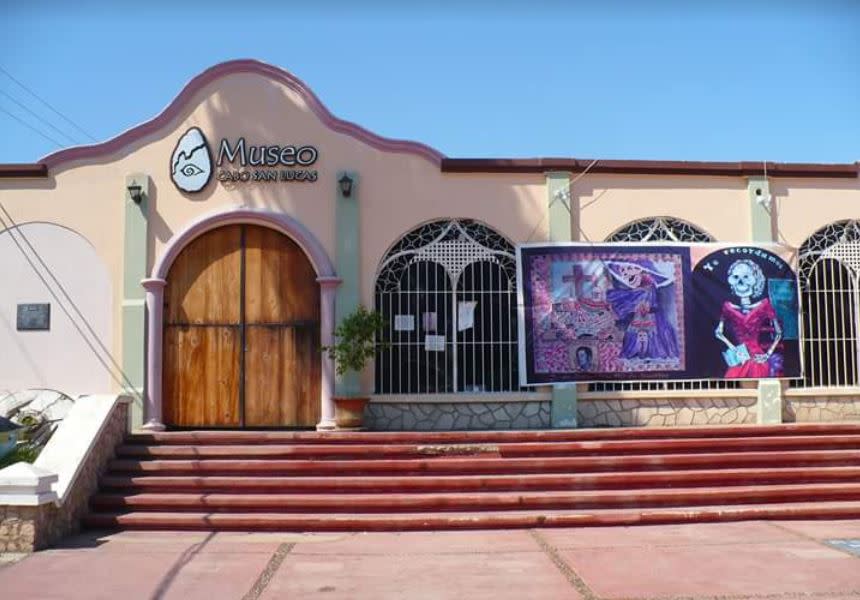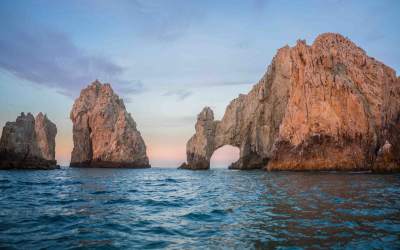Beyond the glittering luxury resorts and off the well-trodden tourist paths of Los Cabos lies a rich tapestry of Indigenous culture waiting to be explored. The region's original inhabitants, including the Pericú, Guaycura, and Cochimí peoples, have called this arid paradise home for millennia. Today, their descendants and cultural legacies live on, offering travelers a chance to experience Los Cabos through a more authentic, meaningful lens. Engaging with these native communities allows visitors to delve deeper into the region’s authenticity while playing a crucial role in preserving ancient traditions and supporting local economies.

To gain context about the indigenous cultures that shaped the Baja California Sur landscape, begin this journey at the Museo de Historia Natural in Cabo San Lucas. The museum showcases the region's pre-Hispanic artifacts and houses scientific collections of paleontology, geology, paleo-biology, and paleoanthropology. Among its notable exhibits are the remains of a Pericú woman's skeleton, representing a people who have been linguistically and culturally extinct since the late 18th century.
El Triunfo is an essential stop for travelers eager to understand the intertwined histories of cowboys and indigenous cultures. Established in the late 1700s and later booming with the discovery of silver and gold, this historic town saw its peak as a bustling mining hub in the 19th century. The remnants of this era, such as the iconic La Ramona smokestack, stand as a testament to its rich industrial past. Visitors can explore the town's mining legacy at the Museo Ruta de la Plata, while the MUVACA, Museo del Vaquero de las Californias, provides insights into the region’s ranching traditions.
For a more immersive experience, visitors can venture to the small town of Miraflores, about an hour's drive from San José del Cabo. This community is known for its traditional leather craftsmanship, a skill passed down through generations. It offers workshops where travelers can observe artisans creating intricate belts, sandals, and bags using centuries-old techniques. By visiting these craftsmen and learning about their craft rather than merely purchasing a finished product, tourists help keep traditions alive.

Food enthusiasts can sample indigenous flavors at La Lupita Taco & Mezcal in San José del Cabo. This popular eatery incorporates pre-Hispanic ingredients like nopales (cactus paddles) and huitlacoche (corn fungus) into modern dishes, offering a taste of the region's culinary heritage.
Tour companies like Baja Backstage lead those seeking a deeper connection with Baja California Sur to remote areas where Indigenous communities still maintain traditional ways of life. These expeditions often include visits to 8,000-year-old cave painting sites and opportunities to participate in traditional ceremonies, always conducted with the utmost respect for local customs. Rather than exploit local communities, reputable tour groups and participants provide economic opportunities while preserving cultural integrity.

Many luxury resort spas in Los Cabos have embraced the region's indigenous heritage, offering treatments that blend ancient wisdom with modern luxury. At One&Only Palmilla's spa, guests can experience the Temazcal ceremony, a traditional sweat lodge ritual for purification. The Spa at Las Ventanas al Paraíso features the "Baja Desert Healing Ritual," incorporating native herbs like damiana and sage. Montage Los Cabos offers a "Mezcal Renewal Massage" using warm mezcal-infused poultices. These treatments not only provide exceptional relaxation but also offer a deeper connection to the area's rich cultural heritage, furthering the preservation and appreciation of indigenous knowledge while simultaneously pampering guests in world-class settings.
Travelers can also support local artists by shopping at markets like the San José del Cabo Art Walk, held on Thursday evenings from November to June. Here, alongside contemporary galleries, visitors can find authentic indigenous crafts, including pottery, textiles, and beadwork.
By engaging responsibly with local traditions, travelers become part of an ongoing cultural narrative, forging connections that outlast any souvenir. This authentic exploration of Los Cabos' heritage ensures that our vivid Indigenous tapestry continues to thrive.
Learn more about responsible tourism opportunities in Los Cabos.


